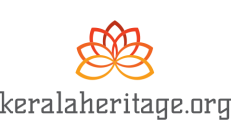Spiritual
Great Spiritual Leaders
Adi Sankaracharya

Adi Sankara, the Indian philosopher who promoted the doctrine of Advaitha Vidantha, was born in Kerala (in Kaladi) in 788AD, to Kaippillyi Sivaguru Nambudiri and Aryamba Antarganam. Sankara traveled throughout India and other parts of South Asia to spread his philosophy through debates and discussions with other thinkers. It was he who founded four mutts in Sringeri, Puri, Dwaraka and Badarinath. Adi Sankara is believed to be the organizer pf monastic order or "dashanami" and the founder of the Sanmata tradition of worship. One of his best works is “Soundarya Lahari”. He ascended Sarvanja Peeth and rose to great fame. He attained samadhi near Kedarnath.
Vidhyadhiraja Chattambi Swamikal

Sri Vidhyadhiraja Parama Bhattaraka Chattambi Swamikal was a sage and social reformer. He was born at Kollur, a suburban area of Thiruananthpuram in 1853. Chattambi Swamikal was known by different names through his intellectually and spiritually enriched life. His original name was Ayyappan, but officially known as Kunjan Pillai and later known as Shanmukhadasan. He had undergone a traditional school near his home run by Pettayil Raman Pillai Asan, a renowned scholar. In the school Kunjan was selected as the class monitor, colloquially known as ‘Chattambi’. There after he was known as Chattambi. Apart from Malayalam, he gained mastery in Sanksrit and Tamil. He was well versed in yoga and spiritual matters. He made several travels in quest of truth and spiituaal knowledge. His major works include Vedadhikaara Niroopanam, Advaiha Chinthapadhathi, Vedantha Saaram and Praacheena Malayalam. He spent his old age at Panmana where he attained Samadhi on 5th May 1924.
Sree Narayana Gurudevan

Sree Narayana Guru was the apostle of social equality who has been credited with transforming the social fabric of Kerala. He was born at Chempazhanthy near Thiruvananthapuram to Madan Asan and Kuttiyamma on August 20, 1856. Narayana Guru mastered in Sanskrit language and poetry, drama and literary criticism, the Vedas and Upanishads. After his studies, Naryana Guru became and wandering saint and lead a life immersed in meditative thought and yoga. He is greatly admired for his vedic knowledge and philosophy. In 1888, he installed a Sivalingam at Aruvippuram, while such consecration was a monopoly of Brahmins. This revolutionary act of Narayana Guru was a challenge against the caste system. In 1904 he established Sivagiri Mutt at Varkala. Thereafter he gave leadership to establish temples throughout Kerala. In 1913 he established Advaita Ashram at Aluva. Swanubavageethi,Aathmopadesh shathaksm, Adwaitha deepika, Daivadasakam, Śivasatakam, Jeevakarunya Panchakam, Anukamba Dasakam, Jathi Nirnayam, Jathi Lakshanam, Chijjada Chinthanam, Daiva Vichinthanam, Athma Vilasam, Shivasathakam are among the long list of his works. His famous teachings include “One Caste, One Religion, One Man”. Guru attained Samadhi on September 20, 1928.
Alathur Brahmananda Swami Sivayogit

Brahmananda Swami Sivayogi was born on 26th August 1852. He was the son of Nani Amma and Kunhikrishna Menon of Vallengi. His real name was Karat Govinda Menon. He is also known as Alathur Shivayogi He founded the Ananda Maha Sabha and Anandamatham. He also founded the Siddhasramam at Alathur. An atheist, he denounced idol worship and religions. He propounded the theory that Ananda (happiness or bliss) should be the touchstone of any human activity. The movement he spearheaded played an important role in the Kerala reformation movement. He encouraged liquor prohibition and women’s education. His reformist ideas are detailed in his works titled ‘Mokshapradeepam’ and ‘Anandasutram’. Sivayoga Rahasyam, Sthri Vidya Poshini, Sidhanubhuthi, Mokshapradeepam, Anandakalpadrumam, Ananda Suthram, Rajayoga Parasyam, Vigraharadhana, Khandanam, Ananda Vimanam, Anandamatha Paraysyam, Anandakkummi, Ananda Ganam and Anandadarsam are his famous works. Brahmananda Swami Sivayogi attained Samadhi on 10th September 1929.
Sree Neelakanta Theerthapada Swamikal
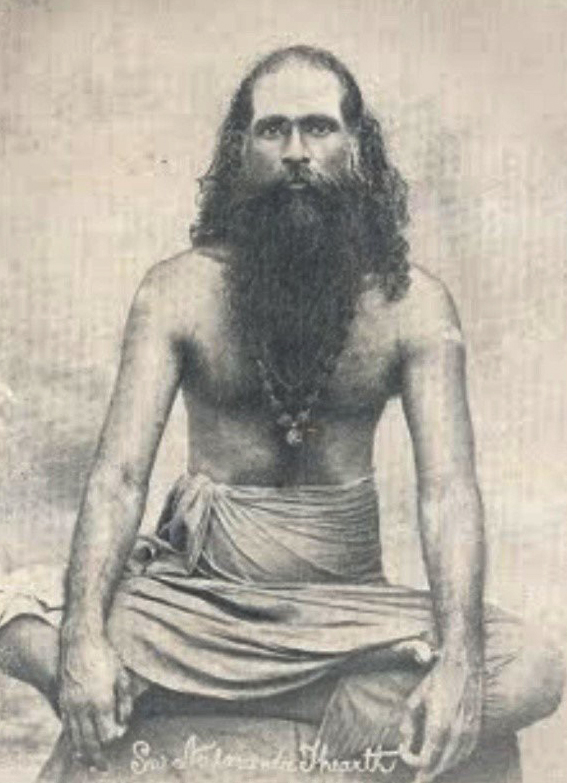
Neelakanta Theerthapada Swamikal the disciple of Sri Vidhyadhiraja Parama Bhattaraka Chattambi Swamikal. He was born in 1872 at Muvattupuzha to Neelakanta Pillai and Kalyani Amma. He was a great scholar in Sanskrit and Vedantha, notable poet and an eminent orator. After serving a short period as a teacher, he accepted ascetic life. He wrote more than forty valuable works in Sanskrit and Malayalam, among them, Acharapadhathi, Devarchapadhathi and Brahmanjali are famous. He was the President of Paramabhattarakashramam of Ezhumattoor. Mahasamadhipeeth at Karauagappally and Neelakantavilasom Sanskrit High School at Puthiyakavu are the memorials of Swami Neelakanta Theerthapada. He attained samadhi in Karkidakom 1096 (ME).
Sree Theerthapada Paramahamsa Swamikal

Theerthapada Paramahamsa was the third important disciple of Sri Vidhyadhiraja Parama Bhattaraka Chattambi Swamikal. He was a scholar, poet, orator, physician, spiritual master and a social reformer. It was he who established an ashram at Vazhoor near Kottayam in the name of Chattampi Swamikal. He was born in 1881 to Cherukol Madam Namboodiri and Kunhikutty Amma. P.Narayana kurup was his original name. He initiated the line of sanyasins of Theerthapada. He simplified the methods of Mantra Yoga, Laya Yoga, Hata Yoga, and Jnana Yoga taught by Swami. Mannath Padmanabhan and many other reformers and social activists were inspired and guided by him. He accepted disciples form all castes and creeds without any distinction and his contribution to remove caste differences and untouchability was unique. One of his widely read work ‘Religion and Society’ very clearly establishes that religion is intended to make man turn to God through knowledge, with full awareness of the non duality which will melt away all differences and fill one with love for everyone and everything in this universe. He attained Samadhi in 1938.
.Sadananda Swamikal
Sadananda Swamikal, whose name was Ramanatha Menon before accepting ascetic life, was born on 187613 Kumbhom 1052 (M.E.) at Thathamangalam in Palakkad. After completing his school studies, Ramanathan went for Kolar in Mysore. There he worked in a gold mine for few months. He then traveled all along North India and became an ascetic and accepted name as Sadananda Swamy. After returning to his native place he established an Ashrama near Kottarakkara, now known as Sadanandapuram, in 1900. He was a famous ayurvedic (siddha) physician. Samudayasasthram, Santhanaratnam, Upjasamanjari, Hindumatha Samskaram are some of his works. Sadananda Swamikal attained Samadhi in 1923.
Shubhananda Gurudevan
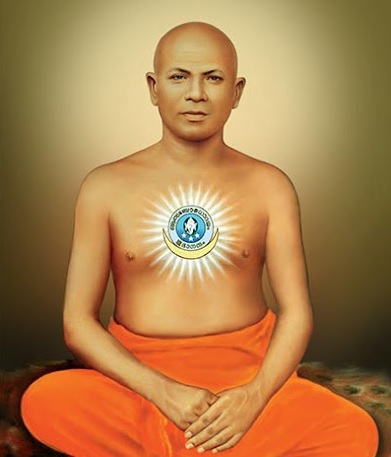
Subhananda was born on 28th April 1882 in the Budhanoor village of Pathanamthitta District. His parents were Ittyathi and Kochu Neeli. Following mother's death in 1894, Gurudev went on to pilgrimages went on to a deep mediation at a place now known “Thapogiri”. After many years of penance, Subhananda Gurudev started his noble mission of liberating the untouchables from their slavery. He mingled with the underprivileged and so called untouchables, and teach them that the God has no distinction and all creations are equal to Him. He declared there is only one Supreme Spirit and that is the creator, protector and savior of all mankind. He established Sree Subhanada Ashram, at Cherukole, Mavelikara in 1918. Subananda Gurudev attained Samadhi on 29th July, 1950.
Sree Neelakanta Gurupadar
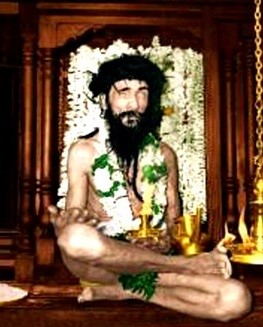
Brahmasree Neelakanda Gurupadar is the founder of the Sree Ramadasa Matom, The Gurupadar was born on December 23 1897 to Mathevan Paillai and Kochappi Pillai at in Ayiroopara, 16km north east of Trivandrum. In 1920 Gurupadar moved into the 14 cents of land comprising His ashram premises and never stepped out again. Here, he performed a 45-year long intense, incessant and penetrating penance.It was here that Gurupadar had his long cherished realisation of the imperishable and impregnable power of Hanumanji, Adhyatmaramayana having exhorted the inquiring spirit of the Gurupadar, he threw himself to the study of the holy text. The Gurupadar's simple ascetic life unattended by the saintly emblem of ochre-robes, kamandalu, or yogadandu is a lesson for the students of Vedanta. Clad in single dhoti, the august saint presented a unique striking personality. Gurupadar established Sree Rama Dasa Matham, consecrated a Rama-Sita-Anjaneya temple and started regular worship. It is believed that he possessed the Ashtaishwarya Sidhis – knowing everything beforehand, disappearing from the view of others, assuming the form of any living being, being simultaneously present at multiple places, etc. Gurupadar who attained Samadhi on 26th May 1965.
Vagbhadanandha Gurudevan

Vagbhatananda was born on 27 April 1885 at Patyam to Koran Gurukkal and Cheeruvamma. His real name was Kunjikannan. He is also known as Vayaleri Kunjikannan Gurukal. He was named after Vagbhatananda by his guru Brahmananda Sivayogi. Vagbhatananda fought against the social evils. Vagbhatananda started Tathwa prakashika, a Sanskrit School and Ashramam at Karaparambu in Kozhikode in the year 1906. In 1911 he started another Ashram, Rajayogananda Kaumudi Yogashala, at Kallai (Kozhikode). Shivayogavilasam, Yajamanan, and Abhinava Keralam are the journals published by him. He propagated the idea of Nirgunopasana or worship without an idol. He is the founder of Athmavidya Sangam. Adyatmayudha, Athmavidya, Athmavidyalekhamal, Brahmasangeerthanam, Gandijiyum Sasthra Vyakyanavum, Iswaravicharam, Kottiyoor Ulsava Pattu, Prarthanaanjali, Manasachapallyam are his important works. He passed away on 29 October 1939.
Nitya Chaitanya Yati

Nitya Chaitanya Yati was a saint, philosopher, psychologist, author and poet. He is best known for his interpretations on AdwaithaVedantha. He was the disciple of Nataraja Guru. Nitya Chaitanya Yati was born on 2nd November, 1924 at Vakayar near Pathanamthitta. His name was K. R. JayachandraPanicker. After securing master’s degree in philosophy, he served as a faculty at the Sree Narayana College, Kollam for a while. Then he joined the Institute of Psychiatric and Spiritual Research as its Director. Later, he succeeded Nataraja Guru as head of the Narayana Gurukulam, established by Nataraja Guru. Nitya Chaitanya Yati authored over 140 books of which 120 are in Malayalam and the rest in English, covering such topics as philosophy, psychology, literature, social ethics and aesthetics. ChinthavistayayaSita, Yaticharitam, Marakkaanaavathavar, RogamBadhichaVaidyarangam, Bhagavadgitasvaddhyayam, JeevithathileVasanthaaraamam, PremavumBhakthiyum: JayadevanteGitagovidam, OruVimochanaSamoohyasasthram, SaundaryamAnubhavam, Anubhooti, Snehasparsham, Nalini Enna KavyaShilpam, Desadanam, Meditations on the Self, An Intelligent Man's Guide to the Hindu Religion, Marxism and Humanist Nonarchy, Sri Narayana Guru: A Brief Biographical Sketch, Love and Devotion, Neither this Nor that But ... Aum:, One Hundred Meditations Based on Narayana Guru's AtmopadesaSatakam,BrhadaranyakaUpanisad: with Original Text in Roman Transliteration, English Translation and Appendices,Love and Blessings: The Autobiography of Guru Nitya Chaitanya Yati, Yati That Alone, the Core of Wisdom: A Commentary on AtmopadesaSatakam, The One Hundred Verses of Self-instruction of Narayana Guru, The Saundaryalahari of Śankaracharyarya: A Translation and Commentary on the Anandalahari are some of his important works. Kerala SahityaAkademihonoured him with theaward for literary criticism in 1977.He attained Samadhi on 14th May, 1999.
MataAmritanandamayi

Mata Amritanandamayi was born on September 27, 1953 in Parayakadavu near Kollam. Even as a small girl, she used to spend in deep meditation on the seashore. She also composed devotional songs and could often be seen singing to the divine with heartfelt emotion. Despite her tender age, her compositions revealed remarkable depth and wisdom. When she was nine years old, her mother became ill, and she was withdrawn from school in order to help with household affairs and to take care of her seven siblings. It was then that she was confronted with the intense poverty and suffering that existed in her community and in the world beyond it. She was deeply affected by the profound sufferings she witnessed. However, realising that every human has a responsibility to lend a helping hand to those less fortunate, she moved forward with confidence in her life of service and compassionate care for all beings, uniquely expressed by the motherly embrace she offers to all who seek solace in her arms. She is also called as hugging saint. Kerala is the headquarters Mata Amritanandamayi’s organization, the Mata Amritanandamayi Math (MAM), and the worldwide headquarters of “Embracing the World”. Mata Amritanandamayi received honorary Ph.D. degree from the State University of New York. She Amma holds many positions such as Founder, Amrita Institute of Medical Sciences (AIMS Hospital), International Advisory committee member of Parliament of the World’s Religions, etc in addition to the positions of the Founder and chairperson of Mata Amritanandamayi Math and Founder, Embracing the World. She received many awards such as Gandhi-King award for Non-violence by the World Movement for Nonviolence (UN, Geneva), Mahavir Mahatma Award at London, James Parks Morton Interfaith Award, Care & Share International Humanitarian of the Year Award etc. All her projects aim towards mitigating the sufferings of humanity and also towards welfare and development of physical and spiritual wellbeing of the society.
Nataraja Guru

Natagraja Guru was the disciple of Sri Narayana Guru. He was born on 18th February, 1895. His father was Dr.Palpu, founder of SNDP Movement and his mother was Bhagavathy. On completion of his Masters Degree programme in Madras, Natarajan served as the Headmaster of Varkala High School. Later he started his ascetic life at Alwaye where he founded Narayana Gurukulam Movement and University for the Science of the Absolute in 1924. In 1928, he was selected for doctorate program in the Sorbonne University of Paris from where he obtained Ph.D. On returning India in 1935, he joined the Fernhill ashram at Ooty. Thereafter, he travelled widely around the world. He established the BrahmavidyaMandiram at Varkala. The Word of the Guru: Life and Teachings of Narayana Guru , Vedanta Revalued and Restated, The Philosophy of a Guru, The Bhagavad Gita - Translation and Commentary, An Integrated Science of the Absolute, Wisdom: The Absolute is Adorable, SaundaryaLahari of Sankara, Memorandum on World Government, World Education Manifesto, Experiencing One World, Dialectical Methodology are his major works. He attained Samadhi on 19th March 1973.
Swamy Abhedananda

Swami Abhedananda was a great Saint who advocated that the chanting of “Hare Rama…” mantra is the simplest means to attain liberation. SwamyAbhedananda was born in the year 1909 to Krishna Pillai and Lakshmi Pillai. Velayudhan was his name. Right from his childhood, the little Velayudhan was inclined towards spirituality. As a young boy, he excelled in different fields of art. At the age of 14, the young Velayudhan’s spiritual quest took shape and form with the blessings of Sri VidhyadirajaChattambiSwamikal. Later,he renounced worldly life and travelled throughout the country visiting different cities and temples and learnt various scriptures. His travels were marked by his visits to various saints like BhagavanRamanaMaharshi of Tiruvannamalai, from whom he derived great spiritual strength. At the age of 27, he was formally initiated into the monastic order and came to be known as Swami AbhedanandaBharati. Drawing inspiration from the life of the great Saint Chaitanya Mahaprabhu, he dedicated his life towards spreading of the Divine Name, specifically the “Hare Rama” mantra. Swami attained Maha Samadhi on 29th October, 1983.
Swami Aagamananda
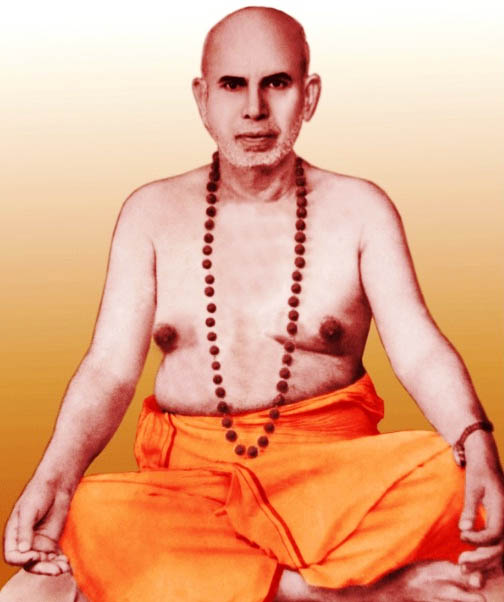
Aagamananda was born on 27 August 1896 in Chavara, Kollam. He was the son of ParameswaranNamboothiri and Lakshmidevi. His real name was Krishnan Nambyathiri. He established first aashrama in Thrissur in 1935. Later he selected Kalady as the centre of his socio cultural activities and established KaladyAdvaita Ashram, Sanadhana Dharma VidyardhiSangham, Brahmanandodayam School, Vocational training centre, Tribal Hostel, Dispensary, Sri Sankara Collage etc. Amrithavaani and Prabudhakerala are two magazines published by him. Swami Agamananda contributed much for the social uplift of the society. He participated in the famous two satyagrahas which was marked as the turning points of the history of modern Kerala. The first struggle was the Vaikom Satyagraha in 1925 in which he was one of the leaders. The second one was the famous Guruvayur Satyagraha. His prominent works include Brahmanadeeyam, SreeSankaracharyar, Narayana Guru, Keralathintebhavi, Bharatheeyavidhyabyasam. He attained Samadhi in 1961.
Swamy Chinmayananda Saraswathy

SwamyChinmayanandaSaraswathy was a world famous saint, religious reformer and great orator with unequal eloquence. He was born on 11th February 1915 to Kuttan Menon and ParukuttiAmma. Balakrishna Menon was his name before initiated to the order of sanyas. He was a journalist before he became a saint. He also participated in independence struggle and imprisoned. He was initiated to the order of sanyas at Hrishikesh on 25th February 1949 as a disciple of great saint TapovanMaharaj. He established Chinmaya Mission in 1954 to spread the knowledge of Advaita Vedanta, the Bhagavad Gita, the Upanishads, and other ancient Hindu scriptures. The Mission runs several educational institutions and other cultural institutions that encompass more than 300 centres in India and abroad. He performed Tapas (meditation) in Himalayas for 10 years. He spread India’s spiritual and cultural heritage all over world through his series of discourses and lectures on Bhagavat Gita. Chinmayananda authored 95 publications, including commentaries on the major Upanishads and Bhagavad Gita. He was a visiting professor of Indian philosophy at several American and Asian universities and he conducted university lecture tours in many countries. He attained Samadhi on 3rd August 1993.
Swami Mridananda
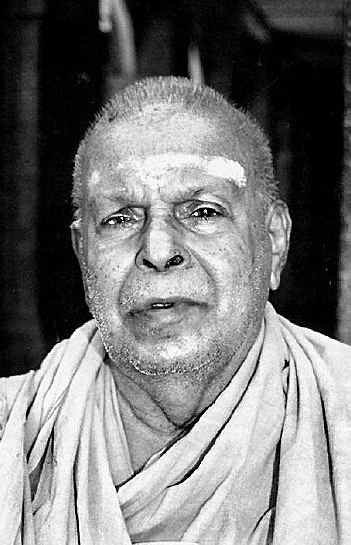
Swami Mridananda was born as Kutta Guptan in 1916 to RamankuttyGuptan and Kunjukkutty. After graduation in 1934, he served as teacher at the Pavaratti Sanskrit Vidyalaya and then the Sree Ramakrishna Ashram School. While working at the ashram school, he became a disciple of Swami Eswarananda. He received the order of sanyasin in 1956 and became Swami Mridananda. He served at the Chennai branch of the ashram between 1947 and 1958. He later moved to the Kalady and became editor of the journal PrabuddhaKeralam published under the guidance of Agamananda Swami from KaladySree Ramakrishna Adwaithasramam. In 1963 he reached PuranattukaraSree Ramakrishna Ashram near Thrissur and headed the Ashram from till 1998. Swami Mridananda was a great Vedantin and exponent of Vedanta and ancient Indian wisdom. His life was pure, simple and an example for spiritual aspirants. His important works are interpretations of the Upanishads, Brahma Sutras, MandukyaKarika, Mukundamala and the Bhagavad Gita. He also wrote numerous popular articles on spiritual topics. He was an editorial board member of Bhakthapriya magazine of GuruvayoorDevaswom and Kshetradarsanammagazine of Cochin Devaswom Board. He was honoured with the Kerala SahityaAkademi Award in 1982. Swami Mridananda attained Samadhi on 4th March 2005.
Swami Nityananda

Nityananda was born in 1897 at Koyilandi. Being an orphan, he was adopted by Chathu Nair, a farmer of Kozhikode. Raman was his name given by Chathu Nair. Later his foster father was also died and the boy was brought up by Chathu Nair’s landlord IswaraIyer. The young Raman became a wandering yogi, spending time on yogic studies and practices in the Himalayas and other places. By 1920, he came back to Kerala and settled at Kanhangad. It was during this time that he started to attract large crowds of people by performing miracles, healing the sick and alleviating the suffering of the masses and gained reputation. He established an ashram near Kanhangad. Swami Nityananda spent more than 25 years at Kanhangad. He selected Kanhangad as the seat for his mother Ashram. Nityananda gave relatively little by way of verbal teachings. Most of the time he was silent and occasionally he used to give teachings. A devotee wrote down some of his teachings and his answers to specific queries, which were compiled and published in the Kannada language known as the ChidakashaGeeta. In 1936, he went to Maharashtra and settled in the village of Ganeshpuri. He established another ashram at Ganeshapuri and while residing there, Swami Nityananda attained Samadhi on 8 August 1961. The Ashram and temples at Kanhangad is now looked after by a Trust.
Swami Ranganathananda

Swami Ranganathananda was born on 15 December 1908 in Trikkur, near Trissur. When he was about fourteen years of age, he joined the Ramakrishna Mission in Mysore and spent at the Mysore and Bangalore ashramas where he worked hard, studied and undergone meditation. In 1939, Swami Rangnathananda was sent to Rangoon to serve as secretary and Librarian at the Ramakrishna Mission. Druing World War II he was returned to India and headed the Mission's Karachi Centre. Then in 1949 he was deputed to head the Ramakrishna mission at New Delhi where he served till 1962. During 1962-67 he was in Calcutta as Secretary of the Ramakrishna Mission Institute of Culture and Director of its School of Humanistic and Cultural Studies. Thereafter, for twenty years to 1993, he served as the President of Ramakrishna Math, Hyderabad. He was regularly invited to address the trainees at the National Academy of Administration and cadets at the National Defense Academy by the Government of India. He served as a member of the Indian National Commission for cooperation with UNESCO during 1964-67. Between 1956 and 1972 he conducted several world tours as an ambassador of religion and Indian culture and travelled more than fifty countries. Following the policy that Swami Vivekananda laid down for the Order, Swami Ranganathananda always remained apolitical and worked for national integration at all levels. He was honoured in 1985 with the first Indira Gandhi Award for National Integration. The Message of the Upanishads, Universal Message of the Bhagavad Gita (three volumes), The Central Theme of SrimadBhagavatam, The Message of the BrihadaranyakaUpanisad, Eternal Values for a Changing Society (four volumes), A Pilgrim Looks at the World, Vedanta and the Future of Mankind, Responsibilities of Public Administrator, Enlightened Citizenship and Our Democracy, Spiritual Life of the Householder are some of his important works. He attained Samadhi on 25 April 2005.
Swamy Sathyananda Saraswathy

Popularly known as ChenkotttukonamSwamy, SathyanandaSaraswathy was born on 25th September 1933 in Andoorkonam near Thiruvananthpuram. His real name was Sekharan Nair. In 1962 he decided to go for Himalayas in search of “realization”. Having known his intention, his Guru NeelakantaTheerthapadar, advised him to stay with him as there is nothing more in Himalayas than here. So he continued in his ashram as a disciple for many years and became a yogi par excellence and the greatest upholder of the Sanathana Dharma. Swami was the founder of more than thirteen institutions in India and abroad. He was the Chairman of the Hindu Unity Forum and administrated more than 25 temples. He was a member the Kendriya Marg Darshak Mandal and Rama JanmabhoomiNyasManch. He authored many books, articles, essays, poems and pamphlets on various aspects of Hinduism. Known for his fiery speeches and organising skills, the Swamy had played a key role in forging unity of Hindu organisations in the state since the 1970s. His published works in English are ‘An Introduction to Ramayana’ and ‘Reflections on Hinduism’. He led the Indian delegates at the sessions on ‘Elimination of Poverty’ at the Millennium World Peace Summit of Religious and Spiritual Leaders at the United Nations in August 2000. Swami attained Samadhi on 24th November 2006.
Swami Tapovan Maharaj

Swami Tapovan Maharajwas one of the most revered saints and a man of total perfection. He was a contemporary of Swami SivanandaMaharaj, the Guru of Swami ChinmayanandaMaharaj. Swami TapovanMaharaj was born in 1889 at Mudappallur in Palakkad to Achuthan and Kunjamma. Chuppukutty was the name given by hisparents. Young Chuppukutty was not at all interested in worldly life and hence he had chosen the life of renunciation, austerity and study. he chooses the desolate forests and higher hills of the Himalayas for austerity, study and meditation. He lived in sacred Uttarkasi a life of extreme tapas (austerity), spending his time in study, reflection and meditation. "HimagiriViharam" and "KailasaYatra" are his two famous travelogues in Sanskrit. Another work of Swami is ‘Wandering in the Himalayas’. He attained Samadhi on 16th of January 1957.
Thycaud Ayyaguru

Ayya Guru, whose original name was Subbarayan, was born in 1814 5 at Madras (now Chennai). MuhuKumaram and Rukmini Ammal were his parents whose ancestors were the natives of Kollam. Young Subbarayan learnt yoga and became an expert in it. He also gained scholarship in Tamil and English. Under the influence of siddha experts, he took to the path of spiritualism. He followed the Sivaraja Yoga tradition. Later, Subbarayan came to Kerala and meditated at the KodungalloorBhagavathy temple for a while. In the meantime, he had traversed a long path in Yoga discipline. SwathiTirunal, Maharaja of Travancore heard about him and invited Subbarayan to his court. Later, during the reign of AyilyamTirunal Rama Varma, Subbarayan was appointed Residency Manger of Travancore. He came to be known as Ayya Guru. Staying at Thycaud in Thiruvananthapuram, SreeAyya Guru carried out his duties both as a yoga teacher and Residency Manager. He was a Yogi cum Family man. He was married to Kanakammal. He was the first and the greatest social reformer of Kerala. AyyaSwamikal started "Panthibhojanam" (inter-dining) in Kerala during 19th century even before Mahatma Gandhi thought of it. He argued that any Yogi could install idols in temples that inspired Sreenarayan Guru to install idols of Siva. The slogan popularized by Sri Narayana Guru, "Orujathy, orumatham ,orudaivom" (One Religion, One Community, One God) was the teaching of Ayya Guru. The ThycaudAyyaswami Trust & Temples are made in memory of this Great Guru of Guru. SreeNarayanaGuru, ChattampiSwamikal, SreeSwayamPrakasha Yogini Amma, Ayyan Kali, A.R.Raja Raja Varma, Raja Ravi Varma, AppavuVakil, Thottahil Raman Kaniyar, VelutheriKesavanVaidhyar are some of his disciples who became famous in the history of Kerala. SreeAyya Guru's important works include ‘BrahmotharaKandam’, ‘EnteKasiYatra’, ‘PazhaniVaibhavam’, ‘UjjainiMahakaliPancharatnam’, ‘TiruvavurMurugan’. SreeAyya Guru attained samadhi in July 1909.
Swamy Sivananda Parmahamsa (Vadakara Sidha Yogi)

SwamySivanandaParmahamsa (VadakaraSidha Yogi) was born at Vadakara. As he observed the sufferings of the people, he explored the possibility to find a remedy for it. He renounce everything and entered the free world in search of a remedy. At last he found a solution for the miseries of the world which is known as “SidhyaVidya” – the way to salvation and supreme bliss. In the year 1921 he founded the SidhaSamaj that stands for the welfare of the world and world peace. Swamiji established 5 asramams, four in Kerala (Badagara, Kayanna, Iyyoor and Thiruvananthapuram) and one in Tamil Nadu (Athur). He attained Samadhi on 21st June 1949.
Vaikunda Swamikal

AyyaVaikunda Swamikal was born in 1809 at Swamithopu near KanyaKumari. His parents were Ponnumadan and Veyilati, belonging to Channar community. His original name was Muthukutty. He spared his life to fight against the untouchability and caste system in the society. He fought against the bonded labour system of the feudalism raising the slogan, ‘if we work, we should be paid’. He described the British Rule as the rule of white devils while that of Travancore as the rule of black devils. He was the founder of SamathwaSamajam in1836, which is considered as the first social organization of Kerala. He established a temple and constructed public well for people, known as MuthiraKinar, at Swamithoppu. The people of various castes took their holy bath in the well and bath was called Muttiripatham. Many of his ideas inspired spiritual leaders like Sri Narayana Guru. Akhilathirattu, Arulnool are his two famous works. Ayyavazhi is the dharmic belief system centered on his life and preaching. He attained Samadhi on 3rd June 1851.
Swami Vidyananda

Swami Vidyananda was a great scholar, a great saint and a veena maestro all in one. Swami Vidyananda was born in 1914 at Palakkad. His earlier name was Ramanathan. The young Ramanathan was fortunate at his very younger age to live with one of the greatest siddha-saints, His Holiness Sri Chandrasekhara Bharati Swaminah, the then Jagadguru Shankaracharya of Sringeri Peetham in Karnataka. Ramanathan was very good at singing bhajans, and Jagadguru being very fond of his nature, made him sing bhajans by his side at every gathering. Later he started some business, but failed and forced to work in the cinema field. After working about 25 years in the film field, he became a member of the Divine Life Society at his 36th age and in the year 1956 he was initiated to the ascetic life and became Swami Vidyananda. He had all the Upanishads, Bhagavadgita and related scriptures at the tip of his tongue and quoted relevant passages freely on every occasion. He took practical, mundane, easily understood examples to explain the most difficult vedantic truth. He was a staunch monist, a self- realised Advaita Vedanti. Swami Vidyananda taught music, bhajans and keertans on veena to many in the Ashrama as an integral part of his life. He adopted the same method of teaching as his Guru taught him, and many including young children learnt veena music from him. Many devotees approached him for formal initiation to be accepted as his disciples. Even though Swami Vidyananda did not accept any disciple formally, many recognized him as their Guru and worshipped him. He attained Mahasamadhi on 7th April 2000.
Siva Prabhakara Siddha Yogi

It is believed that Siva Prabhakara Siddha Yogi was born on 16th March 1263 and lived 723 years in almost 17 physical bodies. Prabhakara Siddha Yogi was born in Akavoor Mana, as the son of Sri Iravi Narayanan Namboothiri of Akavoor Mana in Chowara near Alwaye and Srimathi Gowri Antharjanam of famous Azhvancherry Mana of Malabar. He was said to be the re-incarnation of Pulinayaka Swamiyar. The 17th incarnation of Prabhakara Siddha Yogi leflt for Himalayas at his 8th age and had undergone meditation for about 43 years. He then achieved all realizations of yoga and meditation and became the incarnation of pure self-consciousness – the supreme knowledge. Prabhakara Siddha Yogi was known by many names in different places during his lifetime. In Tamil Nadu he was known as Pambattisiddhan. Prabhakara Sidhaya Yogi lived thirty years with Nathakuzhiyil Janardhanan Nair, who he considered as his “Manasaputhran” at Omallur. On April 6th 1986, he attained Mahasamadhi.
Karunakaran Guru
Born on 1st September 1927 at Chandiroor near Alappuzha.
Father: Govindan
Mother: Karthyani
Karunakara Guru, whose birth name was also Karunakaran, who founded a universal spiritual path based on the faith in the oneness of God and humanity and was a seer of unparalleled wisdom and able to foresee the past, present and future course of development of our life and society. At the age of 14, Karunakaran left home to lead a monastic life and became an inmate of Advaita Ashram at Alwaye. Thereafter, he spent 17 years in various branches and Headquarters of Sivagiri Mutt working in various capacities such as cook, attendant of guests, assistant of Ashram’s head, priest of sanctum sanctorum, and Santhi (one who performs pooja) etc. All these days, he was in search of a perfect "guru' and atlast he found his guru in Khureshia Fakir, a sufi saint. In 1957, he left Sivagiri and moved to a hut on a nearby hill. This spot came to be called 'Santhigiri. In 1968, he moved to Pothencode, near Thiruvananthapuram, where he had put up a thatched hut on a small piece of land donated by a well-wisher. He spent several years in meditation and prayer here, and shared his ideas of the proper way of worship, the 'Gurumargam' or knowing God by the way of 'Guru', and spent countless hours in discourse with the people who came to visit him daily, on a wide variety of subjects. Karunakara Guru was a solace to the people that relentlessly came to him with illnesses, and problems. Karunakara Guru attained Samadhi on 6th May, 2000.
The Ashram established by Karunakara Guru at Pothencode is now known as The Santhigiri Ashram. A a gigantic 91 feet high Lotus Parnasala in marble was also built there. The Ashram extends services to the needy people for education,health care,housing, marriage of girl children etc. It is having branches in Cherthala (Janmagriham), Haripad, Kottarakkara, Thrissur, Kozhikode, Kannur, Sultan Bathery, Palghat, Kallar, Kumily, Cochin, Kottayam, Madurai, Kanyakumari, and Bangaluru.
Parappur Shiva Yogini Amma


Born on 10th March 1923 at Thripayar.
Father: Kuttan Achari
Mother:Parukutty
Shiva Yogini Amma was a great mistic who lived among us and left behind an impreishable herigate of compassion and holiness. Yogini Amma's birth name was Janaki. Her childhood life was full of sufferings due to ailments and diseases and she could overcome it by her dedicated meditation. Shiva Yogini Amma accepted ascetic life on 22nd April 1956 by Guru Navagraha Prasad. The life of Yogini Amma is a record of unusual and amazing achievements. She was liberated from the needs of the body - need for gross food, water or sleep.It was reported that she neither ate food nor drink anything for 21 years. She enjoyed the spirituality of liberation from dependance on matter and going beyong its limitations. The life of Yogini Amma is like an old saying that "Avatars, Yogis came to sweep and clean up the world". Yogini Amma established an Ahram at Oorakam (near Parappur)in Thrissur district. It was only after a decade of her Samadhi that public began to know about this great spiritual personality who had lived among them. Shiva Yogini Amma attained Maha Samadhi on 1st March 1981.
